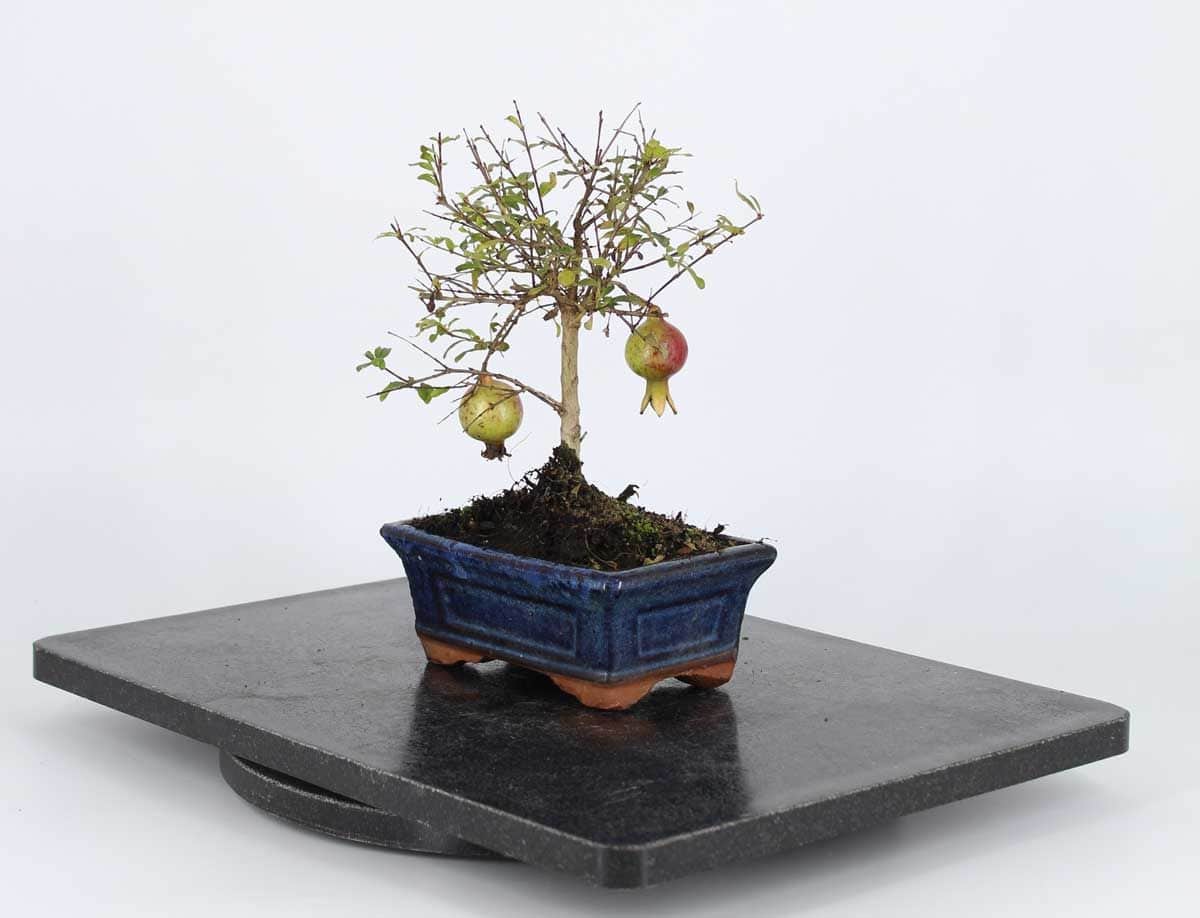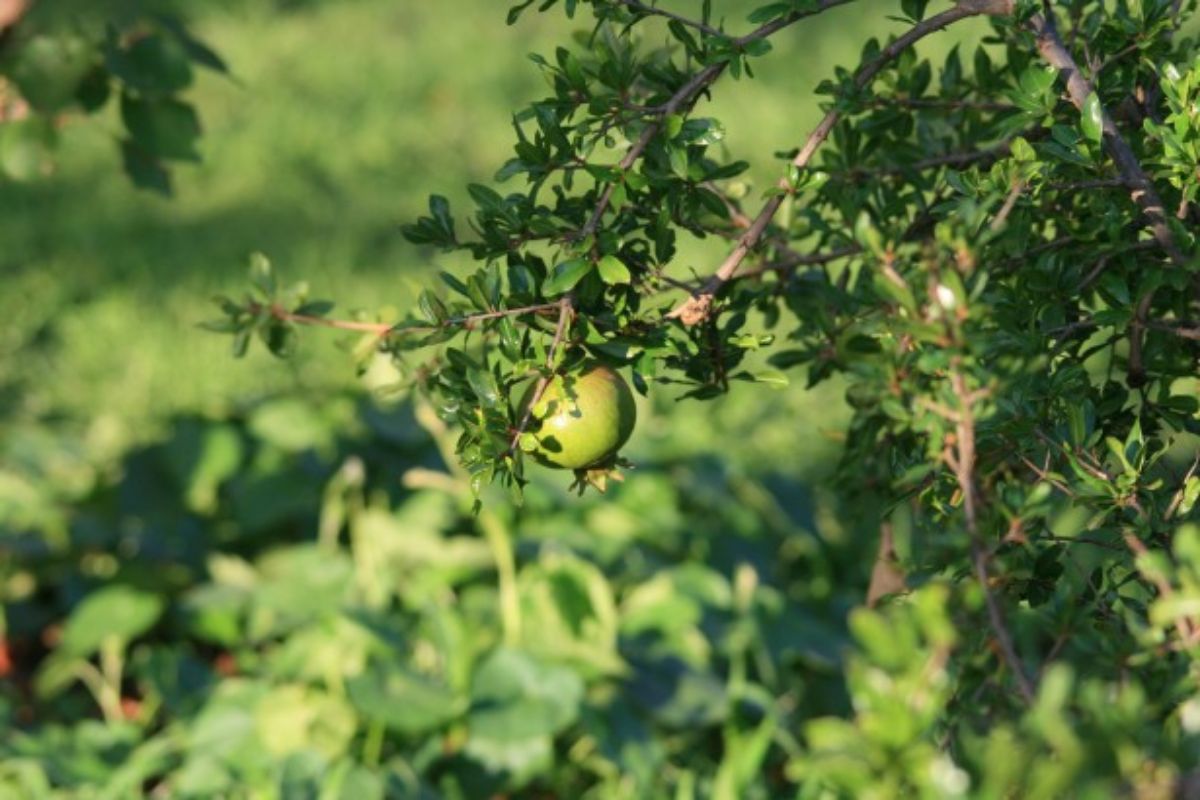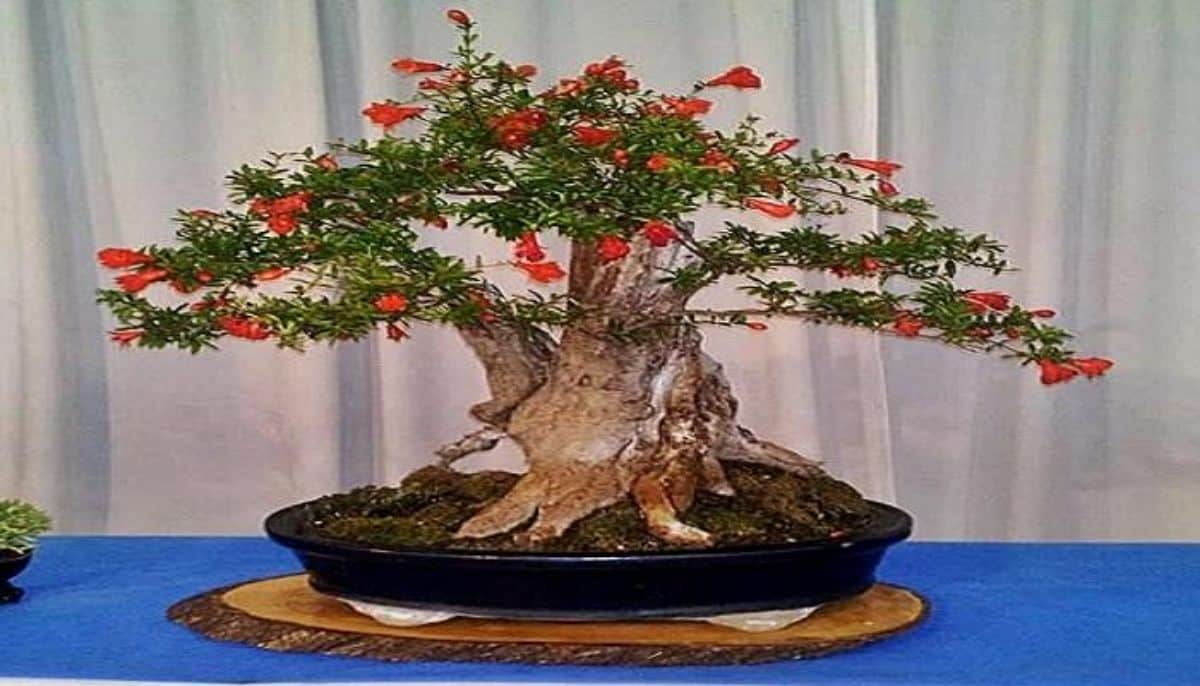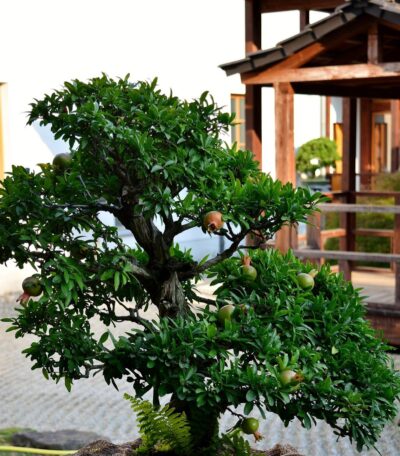
Pomegranate bonsai Source: saybonsai
Although the types of bonsai that you find are more limited in stores and supermarkets, in terms of fruit bonsai, one of the most common, and which is not excessively expensive, is the pomegranate bonsai.
It is a dwarf tree that, if well cared for, is capable of throwing mini grenades, some even edible. But how do you care for a pomegranate bonsai? If you fancy having a fruity one without having to spend a fortune on it, we'll give you a hand so you know everything you'll need to be healthy.
The best care for pomegranate bonsai

Let's start by telling you that the Caring for a pomegranate bonsai is not difficult at all, quite the opposite! Of course, it has its peculiarities which are those that, if you comply with them, you will be able to have a beautiful bonsai all year round; and if not, you can get sick.
But since we don't want that to happen to you, it's time to talk to you about the best thing you can do for a pomegranate bonsai. Go for it?
Location
If you have bonsai or have asked about them, one of the first premises they give you is that they should not move from their place. And it is like that, a tree does not grow legs and it moves from one place to another. That's why they tell you to leave them a couple of weeks quietly in the right location for them to adapt.
The same thing happens with the pomegranate, it is necessary to put it in a suitable place. And what is that? It depends… Its ideal would be outside, but you can put it inside the house (although if possible we do not recommend it).
In summer, the best place for a pomegranate bonsai is in full sun. Do not worry about the temperatures because it tolerates them quite well (the tall ones).
In winter, it is possible that you have to move it to one where there are not so many drafts and at the same time it has a lot of light, as much as possible.
Temperature
Related to the above, as we have told you, it is a bonsai that tolerates high temperatures very well, and also low ones, but not so much frost. You will see, its minimum would be 4-8ºC. If the temperature drops further, you may need to put it in a greenhouse or throw a blanket on it to protect it from the cold.
Substratum
For the land of the pomegranate bonsai we recommend one that has a Neutral pH. In addition, you must mix it with akadama so that the soil remains loose and not caked.
Another option you have is a calcareous soil. Of course, what you should never add is peat or acid soil. They can't stand it!

okbonsai fountain
Irrigation
Regarding irrigation, you should know that it will need a lot of water, because It demands a lot, but between watering and watering it is important that the soil dries outotherwise the roots may rot.
So what we recommend is that, in summer, you water almost daily (it will depend on how hot it is and how the soil is, of course); while in winter, if the temperature is low, it is better to water very little. And no, it is not better to stop watering because if this bonsai suffers from drought it can be damaged very easily.
Subscriber
If you want your pomegranate bonsai to flourish abundantly, and also to bring the pomegranates it bears to fruition, then you need, yes or yes, a fertilizer for it.
The best is one rich in phosphorus and potassium because it will help you meet all your needs. You have to bring it to him from spring to the end of summer, and even in autumn, so that he has enough reserves.
When exactly to give the fertilizer? Well, from the moment the flowers start to come out. In addition, we recommend that you do it little by little, first with a lower dose and gradually increasing until, in the middle of summer, you fertilize with the entire necessary dose for one or two months and then go down again.

Pruning and transplantation
As they are two different things, we are going to talk to you first about pruning. The pomegranate bonsai needs to be pruned, yes. Not only to keep it in shape, but also to clean it up and help it bloom.
You can prune it all year round but, above all, it will need a pruning at the beginning of the spring. Also, you must know that if a branch throws many pomegranates, the following year it will dry up, because it has worn out. So that is why you must take care that it does not throw you more on one side than on the other if you want to keep it in shape.
As soon as to the transplant, it is done every 2-3 years when it is young (the ones we buy in stores) and, when it is old, every 3 years. Of course, unlike others who tell you to do it before they sprout, in this case it is necessary that it has been done and has a couple of leaves.
When transplanting it is appropriate that you cut a few fine roots. Be careful, we have said thin because if they are thick it will make the tree dry. You may not see it right away, but you will be doomed.
Plagues and diseases
Here you must be 'keep an eye'. And it is that it is a tree that receives many pests and diseases. As for the first ones, you must have special care with aphids, cottony mealybugs, red spider mites and whiteflies.
If it already has so many undesirable bugs that can attack it, if we also tell you that chemical treatments do not tolerate them well, you can panic, but don't worry. First, you must remove the pest by hand, with cotton and alcohol, and check every few days to see if it has proliferated again. In general, this is enough to keep her at bay.
Now, in terms of diseases, the ones that affect it the most are rust, powdery mildew and chlorosis (the latter due to a lack of iron and manganese that you could solve with a fertilizer rich in these elements).
Multiplication
And we come to the reproduction of the pomegranate bonsai. You should know that you have two ways:
- Through seeds, They are planted in spring and allowed to grow little by little.
- Through cuttings, which are collected in summer and kept until the end of winter to be planted. These are faster but do not always give good results.
Has it become clearer to you now how to care for a pomegranate bonsai?